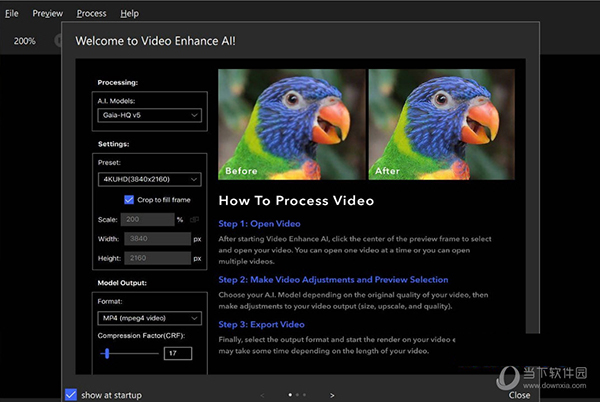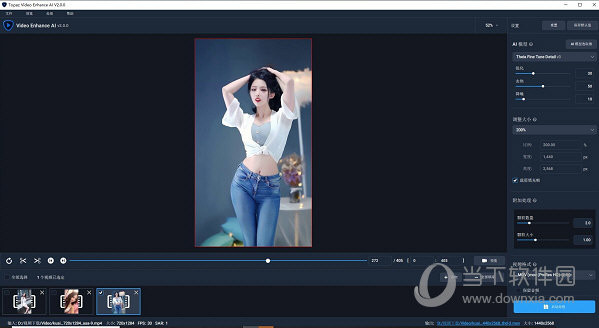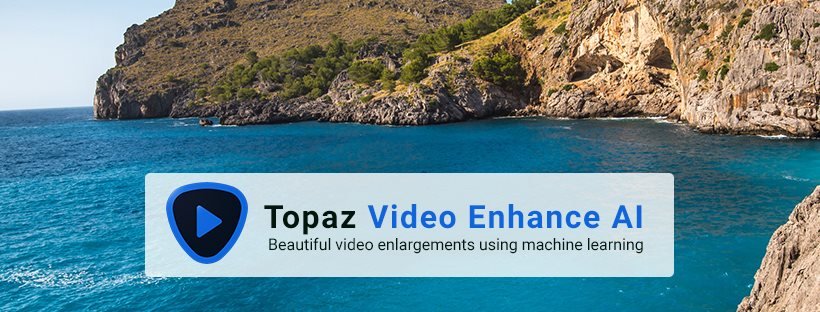
Topaz video enhance ai gaia vs artemis software#
In the past i used some conventional video "restoration" software to enhance the quality of older 360p/480p clips a little and to upscale them all to the same resolution (960x720 was the best compromise for me) in order to combine them into a ~2-Hour compilation. I have 2.4.0 and Gaia is still available when you go to Manage AI Models This is probably able to produce the best results, but also requires most fiddling with the setting. This model has some input parameters where you can individually set and fine tune each aspect of video enhancing.

Only the new Proteus model could also be interesting, but I haven't played around with it yet. The other models are for frame rate conversion and deinterlacing interlaced video. The AI models sometimes tend to produce a very artifical, plastic-like look with little to none surface structure, which may look inappropriate.Īnd that's basically it. This depends on personal taste and you have to try what you like best. You can then add a certain amount of grain to the output. Note that you can also do a run on 100% scale, which doesn't change the output resolution and only tries to improve the overall image quality. You can upscale a HQ 1280x720 video to 4k no problem, but it might not be the best thing to do for a LQ 320x240 video. My advice is to not go too high, depending on the input file. Most important is the output resolution obviously. When choosing Artemis, there aren't many additional settings to set. A 320x240 video could still be high quality so that Artemis HQ would be appropriate. Note that this refers to the picture quality only, not necessarily the resolution. Which one to use depends on the quality of the input file. There is no strict rule for what is still MQ or already LQ, you need to play around a bit with the different models. HQ for "clean" video, MQ for video with moderate noise and/or compression artifacts and LQ for video with strong noise and/or compression artifacts.

They have also added examples for each model, what it can do and what it is most suited for.įor general use, you have Artemis LQ, MQ and HQ. Not sure when they did that, but in the latest version, 2.4.0, Gaia is no longer available. The program does seem to deliver and it holds quite a lot of potential.I think support for Gaia was dropped in favor of several versions of Artemis. The results do seem to be encouraging, quite often ending with crispier and clearer footage. Once again, the results will vary depending on your original footage quality.

Topaz Video Enhance AI boasts an intelligent upscaling system that can go as high as 8K. Lastly, preview your work before beginning the transformation process. One can also adjust video length by cutting it whenever needed. You can also choose to keep the default output name. Models, choosing between Gaia-HQ and Artemis, adjusting in the meantime your video scale, width, and height. From there, head to the right side of the window where you'll find various options. Once you open the application, simply drag and drop your video into the highlighted pane. By analyzing various samples and executing numerous enhancement techniques, the creators behind the app have managed to perfect the mechanism behind video enhancement techniques. The magic lies behind the highly studied algorithm. The app attempts to attract users that have less experience in video editing as well. There's not much to choose from, but that is great in this case. Just as you open the application, you'll notice the interface is fairly simple. Still, like in all similar cases, the whole thing depends on the app as much as it depends on the footage you attempt to improve. In theory, the app can manage to upscale up to 8K with pretty convincing results.
Topaz video enhance ai gaia vs artemis series#
The main idea behind the application is that it offers users the possibility to upscale the footage and increase its quality by applying a series of machine-calculated algorithms, hence the AI in the program's name.

Topaz Video Enhance AI, as the name suggests, is all about offering you the right tools for improving your footage. In such cases and many other similar scenarios, you might be tempted to upscale your content and alter it to fix at least a part of its problems. Videos shot ages ago might look awful on current-gen displays. It's not about creating the content as much as it is about finding the best way to show it on various setups. Dealing with videos from various sources is quite often difficult.


 0 kommentar(er)
0 kommentar(er)
